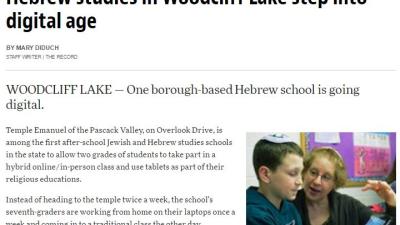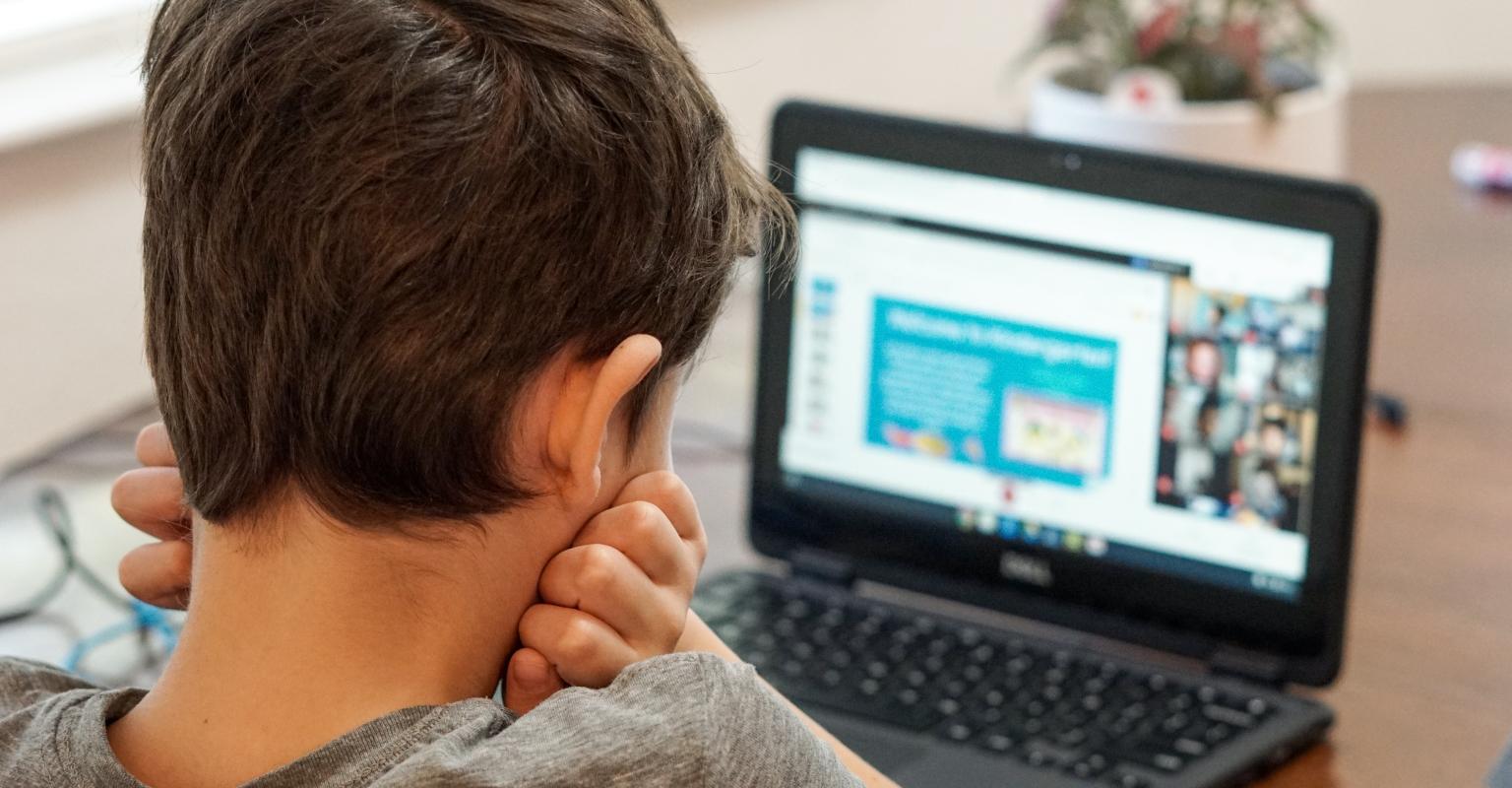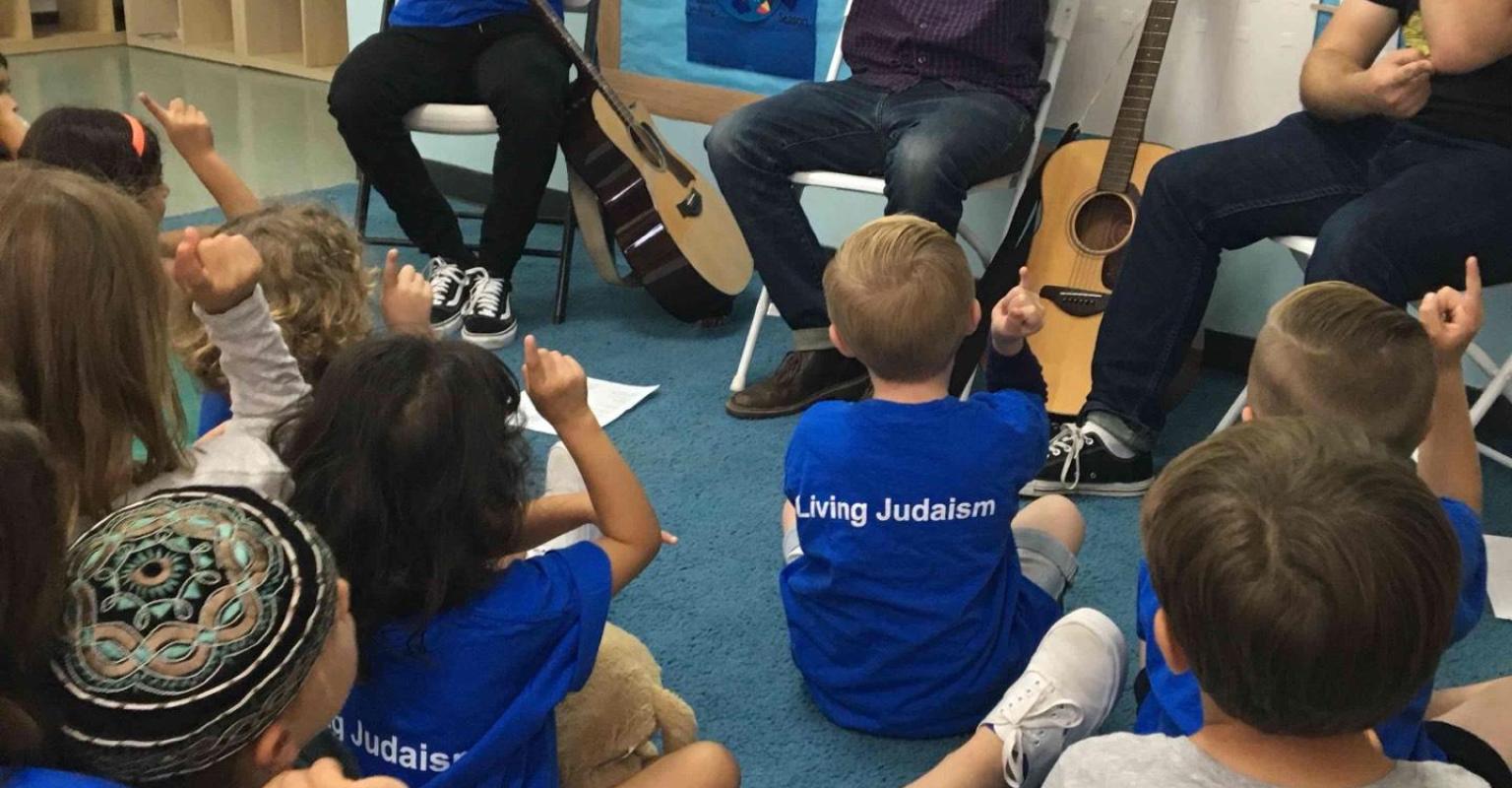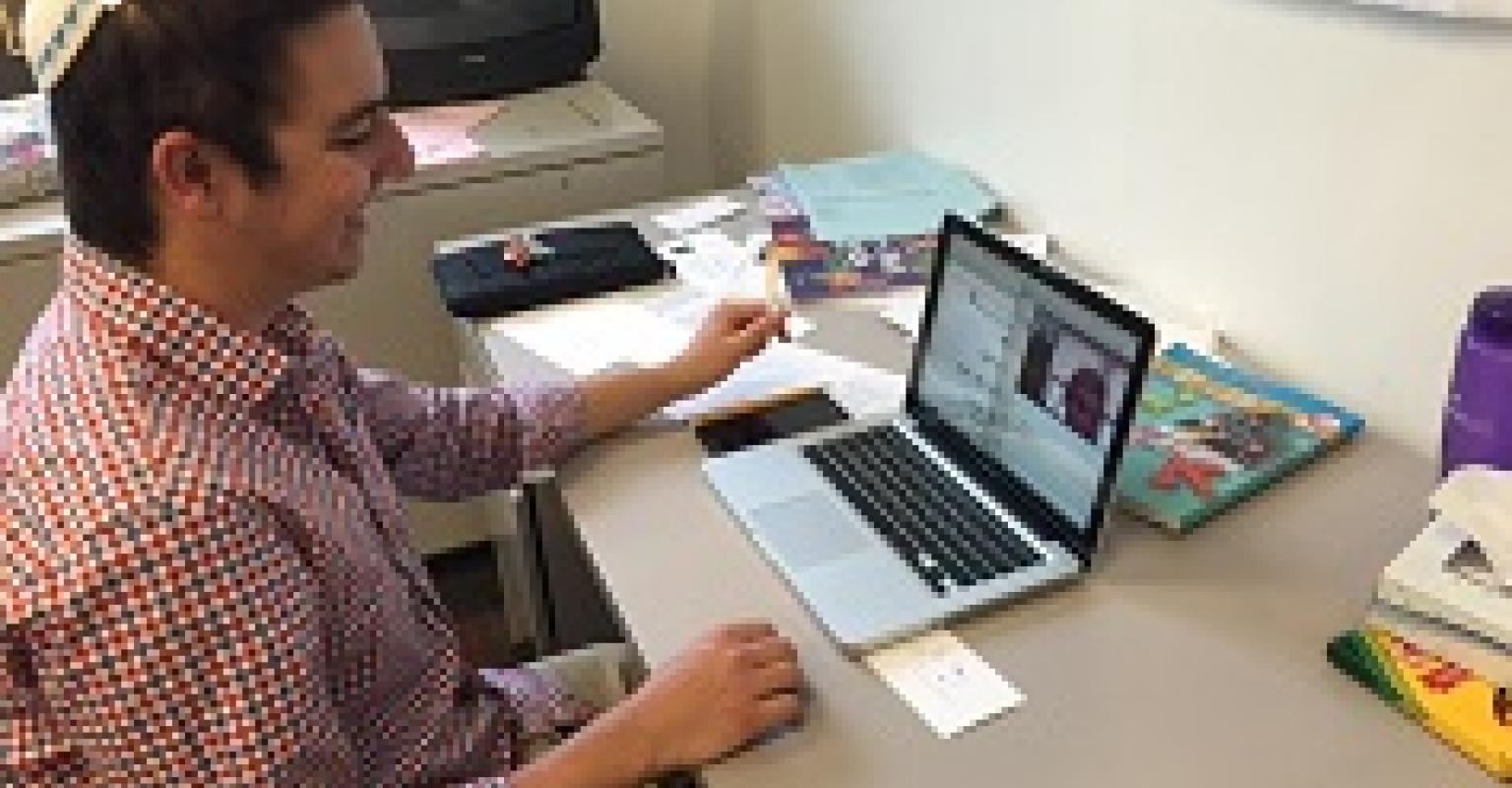Online/Blended Learning Model: Synchronous & Asynchronous Online Learning from Home
Temple Emanuel of the Pascack Valley (TEPV), Woodcliff Lake, NJ

Model Summary:
Temple Emanuel of the Pascack Valley in partnership with JETS Israel offers an online synchronous/asynchronous opt-in home-based learning model for 7th-9th graders. Learners who choose this model come together online to learn in creative and interactive ways for one hour a week with 15 minutes of post-learning activities (e.g. questions to think about, short articles to read, games to play, etc.) that support the lesson. Topics are student-driven. Students also come to the synagogue for an additional 2 hours of learning per week.
Who are the Learners?
There are two groups of learners: a group of 7th graders and a group of 8th - 9th graders. Each group comprises 10 - 20 students.
Who are the Educators/Learning Facilitators?
-
The teachers are from JETS Israel. (www.jetsisrael.com/)
-
The 7th graders (20 students) have two teachers working with them. Ten students could have one teacher.
- A college student is available to monitor a classroom at TEPV for students who choose to do the learning together at the synagogue.
When Does the Learning Happen?
-
In place of the traditional two hours of on-site classes, the online sessions are held weekly on Mondays from 4-5 p.m. with asynchronous follow-up exercises (about 15 minutes) to be done at the student’s convenience any time before the next class.
-
The online program is live, in real-time and fully interactive. The teachers speak, present visuals, and lead exercises. Students respond by typing in the chatbox, speaking, working in small groups, and doing the exercises. Students can also opt to appear by video.
Where Does the Learning Happen?
Most students go online from home, but a few want to do it together at the synagogue.
What is the Learning? How is it Designed?
-
This year learning was centered on the Shoah for one semester and on Israel for the second semester. Temple Emanuel has a specific focus on these topics.
-
JETS Israel tailor makes the curriculum to the congregation’s specifications and adjusts it based on learners’ responses.
What Were You Trying to Achieve with this Model?
-
The education team planning online learning thought it would be great to do this one day a week. It is a different, new, compelling, and fun way to learn.
-
It was designed as a solution to an annual problem of the 7th-grade class not working well. Temple Emanuel did a 6-week trial, which went very well. Families then all voted to continue with online learning.
Key First Steps and Recruitment Plan:
-
The educational director shared it with the local principals’ council; two other congregations are also doing it this year (on Sunday mornings) and several congregations have joined together to now offer a community-wide course for 8 - 9th graders.
-
The online learning model was presented to the Board and the Board of Education.
The online learning was written up in the community’s local paper. (Hebrew studies in Woodcliff Lake step into the digital age)
Role of Governance and Clergy:
The rabbi is supportive of the online model.
Budget:
The cost per hour is equivalent to what the congregation would normally pay a teacher for two hours.
Hiring Needs:
-
Temple Emanuel contracts with JETS and JETS provides everything the congregation needs (other than equipment). The JETS teachers must be, and are, experts in educational technology and relevant content. The teachers are supportive, exceptionally creative, and dynamic.
- There is also one college student who stays in a classroom with students who choose to join online at the congregation.
Relationship of Model to Congregational Learning System:
Learners engage in home-based learning 1 hour each week (with asynchronous additional learning) and attend classes at TEPV for 2 hours each week on an alternate day.
How Do You Describe Your Congregation?
Conservative congregation, 500 family units
Supplementary Materials include:
- Models-In-Action
- After School and Beyond
- Congregational Learning
- Teen Engagement
- Educator Training
Discover more

The Online/Blended Model enables learners to have either more control over the content, time and pace of their learning.

Living Judaism is an all-inclusive experiential learning model of Jewish Education. The purpose of the model is to engage every learner, provide carefully constructed learning experiences, build a strong identity, root students firmly in tradition, and create memories to last for years to come.

Temple Beth-El of Great Neck, NY. FACEtime learners meet once a week face-to-face as a class, meet individually with a Hebrew coach either on skype or face-to-face, and engage in eight family learning experiences during the school year.
